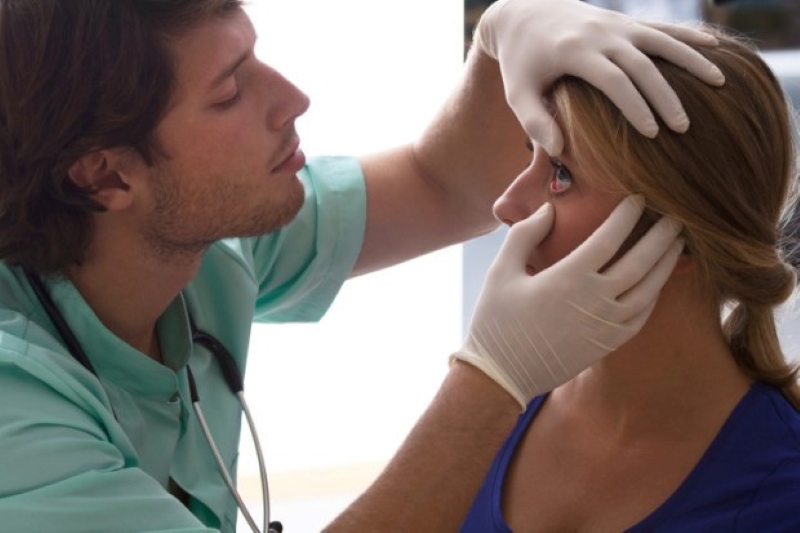
Blurred vision, distorted images and sensitivity to light: it could be keratoconus
We often hear about the cornea, but perhaps without really knowing what it is and what it is used for, this very thin membrane about half a millimetre thick
Transparent and circular in shape, it covers the most anterior part of our eye (the area of the iris and pupil, to be clear).
Its most important function is to contribute, together with the crystalline lens, to focusing images on the retina: the cornea is nothing more than a natural converging lens that allows light rays to pass through the eye, without being absorbed or reflected.
Diseases affecting the cornea can lead to blindness.
An example of this is keratoconus, a rare eye disease that mainly affects younger people, and among rare eye diseases it is the most frequent.
What is keratoconus?
It is an alteration in the shape of the cornea, which changes from rounded to cone-shaped, as the name implies.
This leads to poor, distorted and blurred vision.
The change in shape is due to a decrease in the rigidity of this tissue, which becomes more ‘elastic and weak’, so to speak. Due to the pressure of intraocular pressure, it tends to thin and deform, assuming a cone shape with consequent distortion of the images.
Does it affect both eyes?
Yes, in 96% of cases both eyes are affected, but usually asymmetrically, i.e. the 2 eyes have different stages of keratoconus.
It appears most frequently during puberty, although in very rare cases it can occur as early as birth (congenital keratoconus).
It is a chronic disease, progressing until the age of 30-40, then stopping spontaneously.
There are mild forms that do not significantly alter the life of the sufferer.
Whereas in severe forms, excessive thinning of the cornea can lead to its perforation and a corneal transplant is necessary (25% of cases).
What are the causes of keratoconus?
They are not known.
But there is a hereditary predisposition and it is therefore important to check if any family member suffers from it (heredity 17.5 -19%).
A correlation has been demonstrated with certain inflammatory diseases such as atopy and allergy, in which certain enzymatic imbalances lead to alterations in the renewal of the corneal structure; with genetic disorders such as Ehrles-Danlos syndrome and Down syndrome (genetic factors); and with external causes in the case of predisposition, such as mechanical microtrauma from rubbing in allergic persons.
How is it diagnosed?
Early diagnosis is crucial because especially in the very young, keratoconus can progress rapidly.
Thanks to increasingly effective diagnostic techniques, today, in most cases the diagnosis is made as early as the paediatric age.
After the ophthalmic examination, specific tests are: corneal topography, a quick and painless diagnostic investigation that makes it possible to draw a map of the corneal surface and see its shape; corneal tomography to study the posterior surface of the cornea; and corneal pachymetry to measure the thickness of the cornea, normally around half a millimetre, but in the case of keratoconus it is even thinner.
Read Also
Emergency Live Even More…Live: Download The New Free App Of Your Newspaper For IOS And Android
Corneal Keratoconus, Corneal Cross-Linking UVA Treatment
Keratoconus: The Degenerative And Evolutionary Disease Of The Cornea
Burning Eyes: Symptoms, Causes And Remedies
What Is The Endothelial Count?
Ophthalmology: Causes, Symptoms And Treatment Of Astigmatism
Asthenopia, Causes And Remedies For Eye Fatigue
CBM Italy, CUAMM And CORDAID Build South Sudan’s First Paediatric Eye Department
Inflammations Of The Eye: Uveitis
Myopia: What It Is And How To Treat It
Presbyopia: What Are The Symptoms And How To Correct It
Nearsightedness: What It Myopia And How To Correct It
Blepharoptosis: Getting To Know Eyelid Drooping
Lazy Eye: How To Recognise And Treat Amblyopia?
What Is Presbyopia And When Does It Occur?
Presbyopia: An Age-Related Visual Disorder
Blepharoptosis: Getting To Know Eyelid Drooping
Rare Diseases: Von Hippel-Lindau Syndrome
Rare Diseases: Septo-Optic Dysplasia
Diseases Of The Cornea: Keratitis


